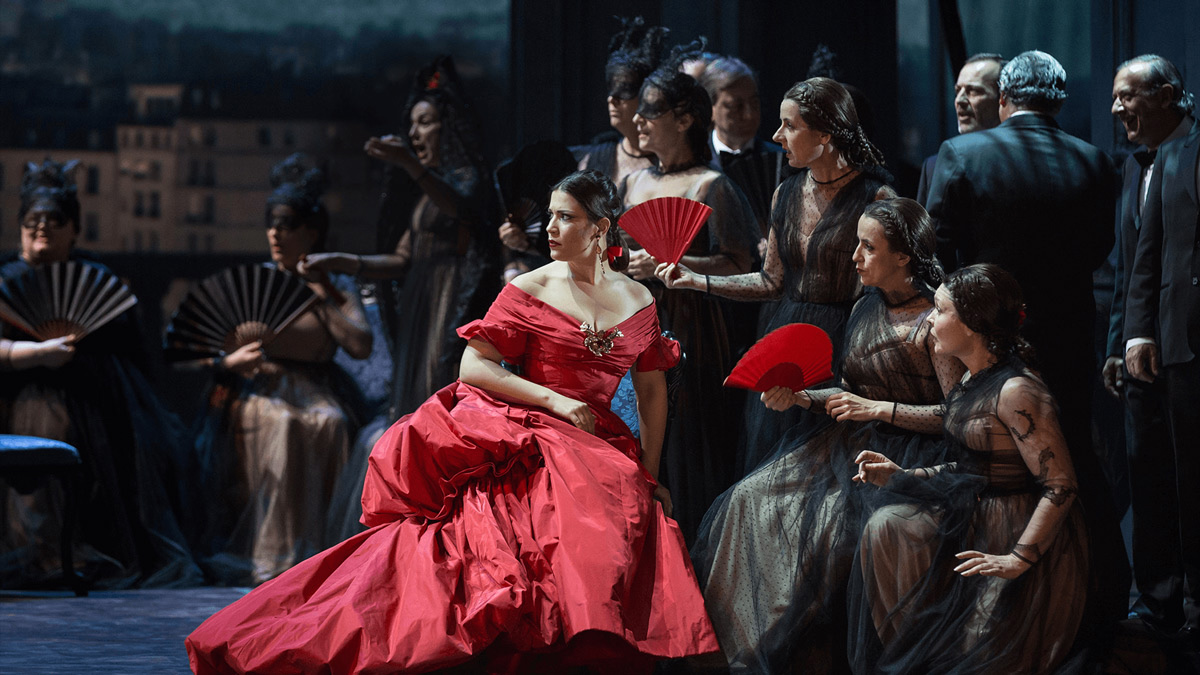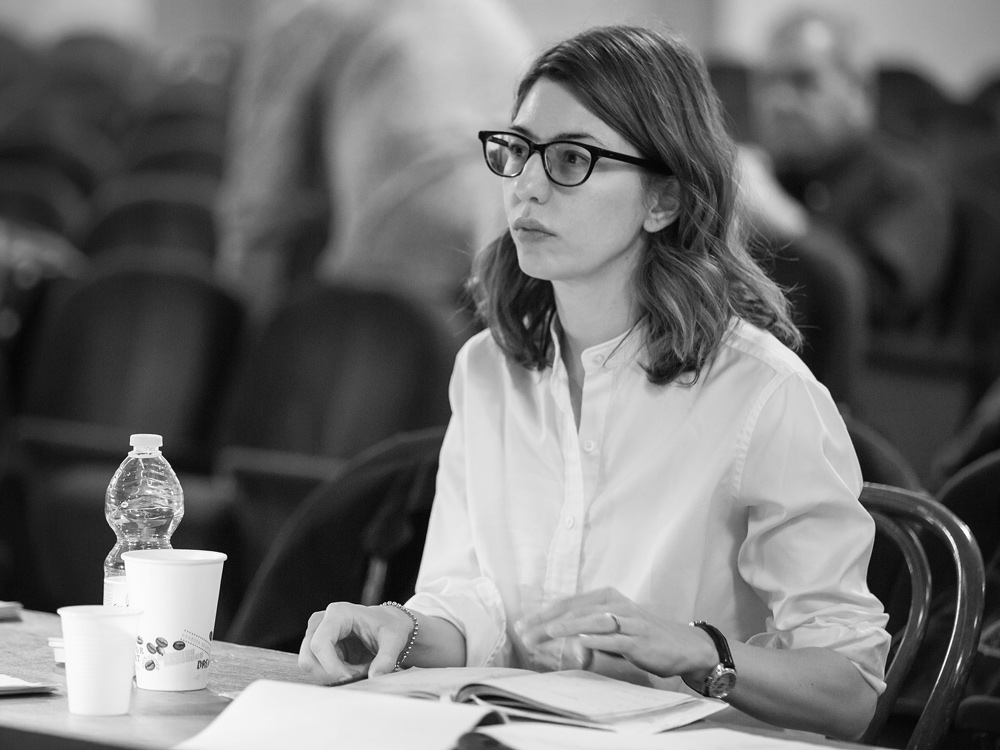
"La Traviata" Photo(c)Yasuko Kageyama
"La Traviata" What is Sofia's artistry that achieved a miraculous fusion of classics and classics?
2017.10.11
Sophia's authorship engraved in her first opera
But that's not all. If you look closely at this work, you'll notice that it is filled with the elements of romance and tragic love stories, which are Sofia's forte. When Sofia was asked to work on this opera, she first looked at the commonalities with the themes she had been depicting. She also takes pride in having depicted large-scale high society scenes many times in " Marie Antoinette ." By focusing on her own experiences and her interests as an artist, the story of "La Traviata" gradually took on Sofia's color.
Sofia is accustomed to building an intimate relationship with the staff and cast by speaking to them in her own words. The same approach she has taken in film has not changed in the opera. She closely exchanged opinions with the staff and cast about the subtle nuances of each scene, searching for the best way to convey the characters' emotions more directly.

"La Traviata" Photo(c)Yasuko Kageyama
Another thing to note about Sofia's artistry is the "loneliness" of Violetta, a famous high-class prostitute in Paris. And the "happiness" she feels when she suddenly encounters pure love in her hollow daily life and her heart is filled with dazzling light. These psychological expressions are very similar to the motifs that have been depicted many times in Sofia's films. And it is also typical of Sofia's works that, of course, "music" is firmly attached to the heroine's emotions as they are cultivated. Perhaps Violetta can be said to be a person in the same lineage as Sofia's previous film muses such as Kirsten Dunst, Scarlett Johansson, and Elle Fanning.
Thanks to these efforts, Valentino and Sofia's aim of "portraying the heroine as a woman that modern people can sympathize with" was successfully achieved. Sofia successfully blended the classical masterpieces brought by Verdi with modern sensibilities. As a result, a fountain of delicate and dynamic emotions welled up, and a new "La Traviata" that never ceased to move the hearts of the audience was completed.
With the solemn climax and Violetta's death, the stage is filled with dazzling light, and the Teatro dell'Opera di Roma erupts in thunderous applause. The stage curtain rises, and as each cast member gives a speech, director Sofia Coppola joins the line, bowing deeply to the audience. It's a wonder that the tragic heroine who was once shot dead outside the theater (in " The Godfather Part III ") is now on stage as a director at the world's greatest opera house, receiving ovations from a packed audience. Isn't she the one who feels this more than anyone else? Something ends here, and something begins. We cannot help but celebrate with growing excitement that a new door will be pushed open from this place where she and opera first met.
Text: USHIZU ATSUNOBU
Born in Nagasaki in 1977. When he was 3 years old, he saw ``Superman II'' with his father and became fascinated with movies. After The Graduate from Meiji University, he worked for a movie broadcasting channel and then became a movie writer. Currently, in addition to writing for Eiga.com, EYESCREAM, Real Sound Movie Club, etc., he also contributes to media press and theater programs.
Distributor: Tohokushinsha
Photo(c)Yasuko Kageyama
*Information as of October 2017 article publication.

